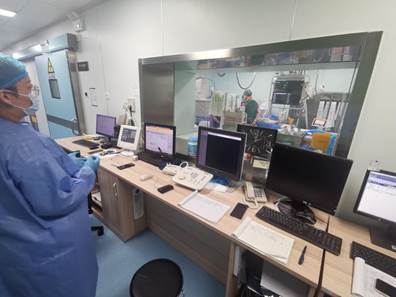On July 18, 2024, Department of Kidney Transplantation of the First Affiliated Hospital (FAH) of Xi’an Jiaotong University (XJTU) successfully performed the second case of allogeneic islet cell transplantation.
The young male patient was diagnosed with diabetes mellitus for 9 years complicated with renal failure. He underwent allogeneic kidney transplantation two years ago. Postoperatively, renal function was properly recovered, whereas blood glucose level was not effectively controlled, leading to peripheral vascular complications such as the lower limb arteriosclerosis. After islet cell transplantation, the patient's postoperative condition was stable, and blood glucose level was effectively controlled. At present, use of insulin is terminated. This operation is the second case after the first successful case of allogeneic islet cell transplantation for treating diabetes mellitus after kidney transplantation two months ago, which indicates the maturity of allogeneic islet cell transplantation for treating diabetes mellitus after kidney transplantation in FAH.
Allogeneic islet cell transplantation requires a complicated process of isolation, purification and identification of islet cells for several hours after the donor pancreas is obtained, and finally a sufficient number of islet cells can be obtained for clinical islet transplantation. During islet cell transplantation, islet cells are implanted into the blood sinus of the patient's liver through the portal vein via minimally invasive technology, thereby restoring or enhancing the insulin secretion function and effectively controlling the blood glucose level of the patient. Compared with traditional oral medication or insulin injection, islet cell transplantation has multiple advantages of better curative effect, less side effects and higher quality of life of the patients, etc. Especially in patients complicated with diabetes mellitus who have received other organ transplantations, islet cell transplantation not only does not affect the use of immunosuppressants, but also properly controls blood glucose level, which is an internationally advanced potential approach for treating diabetes mellitus.

Isolation and purification of islet cells

Surgical procedures